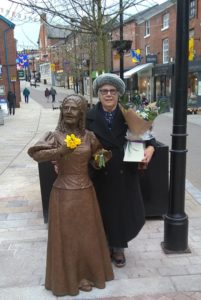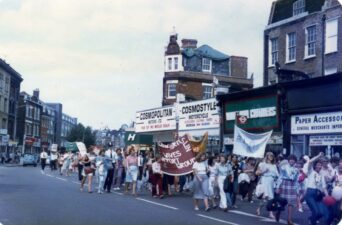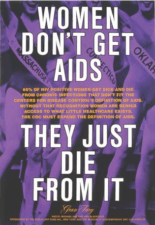The sun shone down on the town of Congleton, Cheshire, on International Women’s Day, 2022. That was the date chosen by Elizabeth’s Group, of which I am Patron, to unveil the magnificent life-size statue of Elizabeth Wolstenholme Elmy (1833-1918), Victorian suffragist, Edwardian Suffragette, and life-long women’s emancipation campaigner. The statue was unveiled by Baroness Hale of Richmond, former president of the Supreme Court, and no more fitting person could have been found to perform the task. Wolstenholme Elmy was referred to in her own time as Britain’s “little Lord Chancellor”, the kindly meant epithet bestowed upon her by one holder of the actual office, Roundell Palmer, Lord Selborne, who served under William Gladstone. Such was her knowledge, particularly of the laws impacting on the lives of women and children, that had she been alive today there is every likelihood Wolstenholme Elmy would have pursued a professional legal career herself. As her biographer, I have traced her texts in more than thirty national and international archives across two decades. Thus for me the day was the culmination of my work to cement Wolstenholme Elmy’s place in British suffragism and overturn the critical impression of her as only a minor figure in “the Cause”.[1]
Wolstenholme Elmy, a diminutive woman only a little over four and a half feet tall, was once reviled in her home town, and I have written before for WHN on her rather tempestuous relationship with her female colleagues – most of whom did not share her progressive convictions regarding utopian “Free-Love”, atheism, or republicanism. One Congleton protester even drew blood when a well-aimed missile struck her above her eye after an atheist meeting which she and her husband Ben had convened in one of their three silk mills in 1875.[2] What she lacked in stature, however, she certainly made up for in conviction and stoicism. Sticking to the task was something she firmly believed in and she wrote that even if the road ahead has been “moistened with the blood and tears” of fallen comrades that was no excuse for giving up the fight.[3] Elizabeth’s Group too lived up to those words, continuing to raise the money for the statue throughout the Covid-19 pandemic. Little by little donations flowed in until, with one particularly generous bequest in recent months, the target was reached. Congleton was about to restore Elizabeth to the town and provide her with the “national monument” one press article of September 1910 insisted she deserved.[4]
The statue, cast in bronze, was designed by Hazel Reeves, the award-winning sculptor who had previously worked on the “Our Emmeline” statue in Manchester. At the unveiling Reeves spoke warmly of Wolstenholme Elmy, noting that “[w]e need to have more role models on our streets, reminding us that women have always done extraordinary things [and] inspiring the next generation to continue [the] work for women’s rights.” The Mayor of Congleton, Cllr. Dennis Murphy, said in his speech that “[w]e all owe Elizabeth an enormous debt and it is fitting that she should be commemorated in our town.” The Chair of Elizabeth’s group, Susan Munro, noted how the Group had drawn on Wolstenholme Elmy’s strength when fund-raising had been hit by the trials of Covid-19. Munro said “[r]emembering the things she had achieved, we set our faces like flint, changed tactics and ultimately triumphed.” Cllr. Kay Wesley, of the Women’s Equality Party, spoke of how “one media pundit had named the town ‘the feminist republic of Congleton’”, something of which Wesley was very proud![5] The day of celebration ended with a Reception in the Town Hall, at which I spoke to remind guests that in the 1870s the then Mayor had banned gatherings there hosted by the Wolstenholme Elmys on the grounds they had the potential to become “seditious”. How very different everything was in 2022, with the suffragette colours of green, violet and white fluttering from the bunting, flowers be-decking the tables and a wonderfully exhibition on view, curated by the staff of Congleton Museum.
Baroness Hale described the occasion as “one of the greatest days in Congleton’s history” and spoke of Wolstenholme Elmy as “a small woman with a big brain, a big heart and a big constitution.”[6] There were days during the campaign for women’s emancipation when Wolstenholme Elmy was tempted to give up, and at one time even to emigrate to the USA, but her sense of duty to her sex always brought her back headlong into campaigning. A widow since 1906, she minded keenly not been arrested and imprisoned for her part in the ‘militant’ campaign. But she abhorred violence and when in 1912 the suffragettes turned to arson, she vowed she could no longer support them, citing in a widely circulated letter the fact that the “anti-social and criminal actions” of some militants “would seem designed to wreck the whole movement.”[7] She continued thereafter to support the movement as a non-violent campaigner and led the constitutionalist National Union of Women’s Suffrage Societies Pilgrimage through Congleton in 1913 on her venerable pony, Vixen. Like many other women Wolstenholme Elmy had both a militant and a non-militant identity, but unlike most she had held a key role in over twenty of the most prominent feminist organisations of the day.[8] Her role might have been marginalised in nearly all the key texts of the suffrage movement, such as Sylvia Pankhurst’s The Suffragette Movement (1931), but she has now been restored to both history and to public space in style.[9]
Dr Maureen Wright is a Visiting Fellow at the Institute of Humanities, University of Chichester, UK. Her specialism is the Women’s Suffrage Campaign in Britain, 1865-1928, on which she has published widely. Recently retired from teaching, she is now undertaking further studies in Theology, Imagination and Culture at Sarum College, Salisbury. Contact email. Maureen.wright@chi.ac.uk
[1] For my biography of Wolstenholme Elmy see, Maureen Wright, Elizabeth Wolstenholme Elmy and the Victorian Feminist Movement: the biography of an Insurgent Woman, (Manchester and New York: Manchester University Press, 2011).
[2] Wright, Elizabeth Wolstenholme Elmy, pp. 109-11.
[3] Elizabeth Wolstenholme Elmy to Harriet McIlquham, 12 May 1903, fol.119-20. Elizabeth Wolstenholme Elmy Papers, Add. Mss. 47449-55. British Library.
[4] Louisa Martindale to the Editor, Votes for Women, 9 September 1910, p.799.
[5] All quotations in this paragraph are taken from ‘Our Elizabeth’ cemented in town’s history’, Congleton Chronicle, 10 March 2022, pp.14-5.
[6] Ibid.
[7] Elizabeth Wolstenholme Elmy to the Editor, ‘The Militant Outrages’, Manchester Guardian, 23 July 1912.
[8] I am aware that, at the time Wolstenholme Elmy began campaigning for women’s rights the term ‘feminism’ did not exist. It is a French term of the fin-de-siecle, but was swiftly adopted into Britain.
[9] Wolstenholme Elmy is also one of the 59 women whose portraits decorate the plinth of the statue of NUWSS leader Millicent Garrett Fawcett in Parliament Square.


